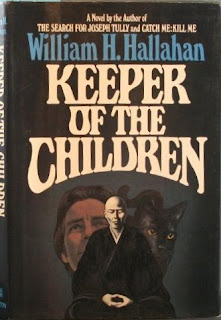 Birthday greetings to horror editor and author extraordinaire Dennis Etchison. Above is the 1984 Scream/Press hardcover of Red Dreams; the paperback edition has been on my want-list for awhile now. Below are Shadowman (Dell/Abyss Feb '93) and California Gothic (Dell '95), which I have not read. But his The Dark Country made my best-of-2011 list, and Cutting Edge is a very good, very eclectic '80s horror anthology.
Birthday greetings to horror editor and author extraordinaire Dennis Etchison. Above is the 1984 Scream/Press hardcover of Red Dreams; the paperback edition has been on my want-list for awhile now. Below are Shadowman (Dell/Abyss Feb '93) and California Gothic (Dell '95), which I have not read. But his The Dark Country made my best-of-2011 list, and Cutting Edge is a very good, very eclectic '80s horror anthology.
 On to other stuff: how about some horror fiction help? Couple emails I've received in the past month or two here:
On to other stuff: how about some horror fiction help? Couple emails I've received in the past month or two here:Nick writes of a book, about a family moving into this house and they had a son who seemed to be the protagonist that had to deal with the monster or ghost. Cover was a picture of a house and I believe the house was twisted and looked like some kind of demonic face...
John writes, A family moves to New England. Wouldn't you know it, the oldest son soon grows distant and more reclusive, eventually moving into the basement. The family is content to leave him down there, listening to his music and being a teenager. Eventually he paints the basement all black, blacks out the windows, etc. At the climax of the novel, a parent (the mother?) goes down there to find that he is just about to open a portal to hell, assisted by a few red-robed supernatural beings doing some kind of supernatural incantation over a supernatural altar. The parent is able to disrupt the ceremony, portal to hell closed, fin.
The book would have been published in paperback sometime between 1994-1996. As I recall, the cover was purple with the outline of a house in the foreground.
Also: yesterday I spent three hours at the Wake County Public Libraries Booksale - and oh my god, what vintage horror paperback treasures I found! I wasn't in the horror section but oh, five seconds before I'd found several of my most sought-after titles. Many were in mint condition, as if they been vacuum-sealed for decades. You fellow obsessive book-buyers will know the feeling of disbelief and excitement that accompanied my visit. Tables and tables of paperback horror amidst tables and tables and tables of books in an enormous warehouse. Gobsmacking. You'll have to wait, though, to find out what I bought - all for $2 each! Right now I'm in the middle of a Dell Abyss paperback as well as reading stories in another great anthology. Hope to have some reviews up by next week!





































